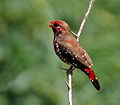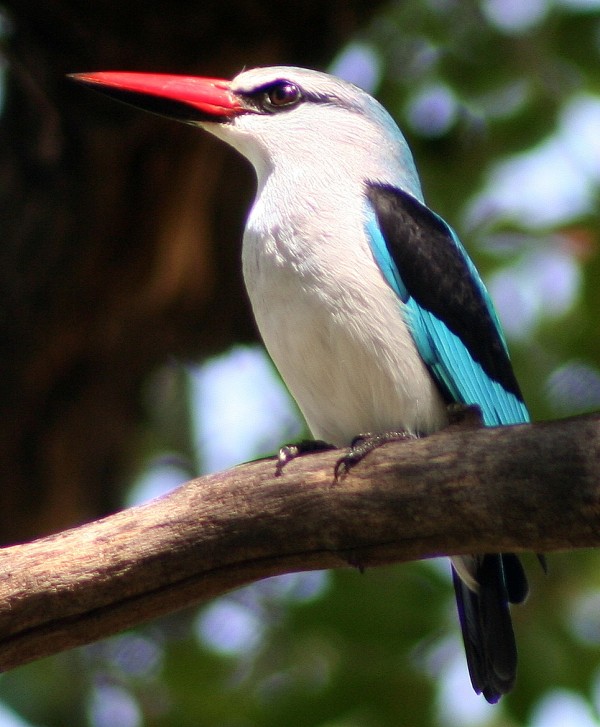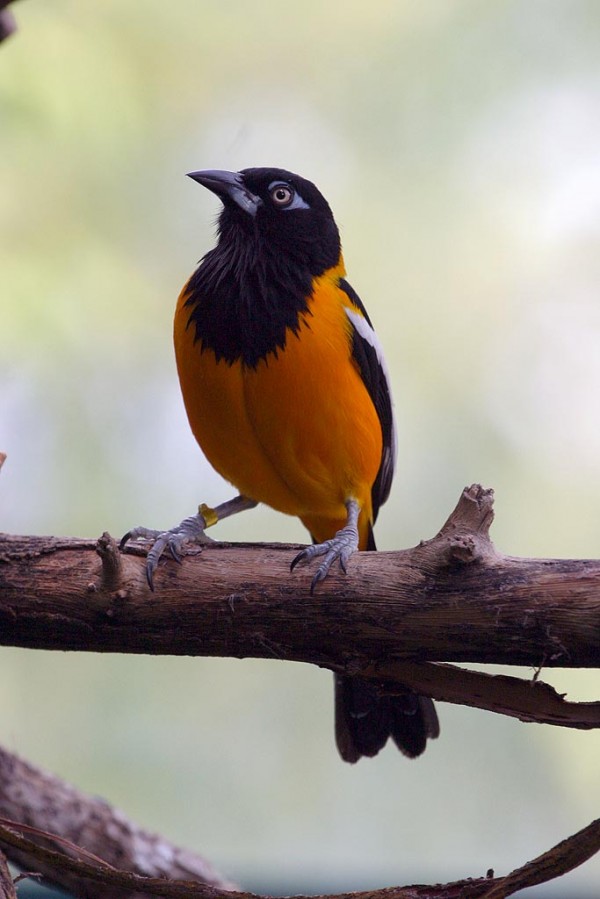The trails of Namdapha National Park are treacherous, but they almost
always seem to lead to wonderful new discoveries. How can one convey
the excitement of a journey like this? The bamboo bridges you cross are
rickety and fragile, held together only by cane; and the water you hope
you will never fall into is freezing cold. Returning after days of
tiring foot-slogging in the temperate forests and rhododendrons high up
in the hills, we reached the village of Hazulu, where we were staying at
the home of a friend. Along with a few others, I was on a
Rufford Foundation funded bird survey for the
Nature Conservation Foundation
in the high altitudes of the hills to the east of Namdapha National
Park in Arunachal Pradesh, near India’s border with Myanmar. And it was
in Hazulu that I saw the bird.

Black Bulbuls (Hypsipetes leucocephalus)
are one of the commonest and most conspicuous bird species in the
Himalaya and the Western Ghats. Birders who have spent time in these
areas will be familiar with huge, raucous flocks of these birds flying
over the forest canopy and feeding in fruiting trees. With smoky-black
heads and bodies, and thin, coral-red bills, these birds are
impressively attired, but balance their visual appeal with a range of
loud and piercing cries, which some might call ‘cheery’, but are often
more capable of inspiring irritation than joy.
India has three subspecies (or races) of
Black Bulbuls. None of these races are strictly migratory, but flocks
seem to move long distances in search of food, and changes in weather
will often result in the almost magical appearance or disappearance of
Black Bulbuls. In BR Hills (southern Karnataka), areas silent one day
will become cacophonous the next, ringing with the squeals and cries of
vast numbers of Black Bulbuls. It is like watching a session of the Lok
Sabha in progress.
Asia has ten Black Bulbul races, from Afghanistan in the west to Vietnam in the east
1. Three of these races have white heads (now you know why they’re called
leucocephalus!),
and breed in south China, migrating in winter to parts of Myanmar,
Thailand and to other countries in Southeast Asia. These birds are
certainly more handsome than their drabber Indian cousins, with bright
white heads contrasting strongly with black bodies and red bills. The
Indian subcontinent has only once seen these birds, in March 1995 in
Bangladesh
2.

So
imagine our surprise when we found these birds in Arunachal Pradesh!
The friend who was hosting us told us first that there were strange
black bulbuls with pure white heads around, we were incredulous and a
bit dismissive. Juveniles, we said, whose pale grayish upperparts had
been exaggerated into white. But the next morning brought a shock. In
the persimmon orchards near the village were huge flocks of the ‘normal’
Black Bulbuls – and mixed with them in small numbers were birds with
snow-white heads! They were spectacular. Even more so because they mixed
freely with the all-black Black Bulbuls, and stood out in an otherwise
drab flock. We found these birds once again at another village, again in
a persimmon orchard, with other Black Bulbuls.
The resident Lisu people in the area say that these birds have been
visiting the area for the past two winters, and have not been seen
before. They should know, because Black Bulbuls frequently raid orchards
in the area, and the local people know them well as a pest. In the Lisu
language, they are known as
Chamtakye. What makes these
records really interesting is that these birds have been visiting the
area for only the last two years. Global warming and changing climate
has the potential to change the routes and timings of bird migration,
and one could speculate that these sightings are the result of recent
climate change in the area.































 The
Doel or the magpie robin is the national bird of Bangladesh.
One of the more familiar birds about towns and villages. Shy, silent
and unobtrusive during non-breeding season, then skulking in shrubbery
and only uttering plaintive swee-ee and harsh chur-r.
Conspicuous during breeding season when male sings lustily from
favourite tree-top or post, chiefly early mornings and late afternoons.
Song punctuated by upward jerks of white fringed tail. Also very
good mimic of other birds' calls. Breeding territories jealously
guarded, and intruding males defied with puffing- out, strutting
and much show of pugnacity.
The
Doel or the magpie robin is the national bird of Bangladesh.
One of the more familiar birds about towns and villages. Shy, silent
and unobtrusive during non-breeding season, then skulking in shrubbery
and only uttering plaintive swee-ee and harsh chur-r.
Conspicuous during breeding season when male sings lustily from
favourite tree-top or post, chiefly early mornings and late afternoons.
Song punctuated by upward jerks of white fringed tail. Also very
good mimic of other birds' calls. Breeding territories jealously
guarded, and intruding males defied with puffing- out, strutting
and much show of pugnacity. 






 The
Kaththokra or the woodpecker can be found in twenty two
species in the country, especially in the Sundarbans.
The
Kaththokra or the woodpecker can be found in twenty two
species in the country, especially in the Sundarbans.